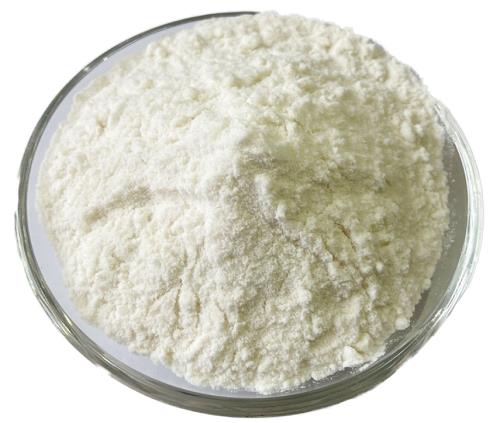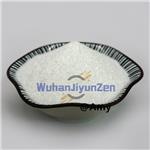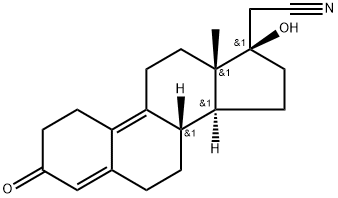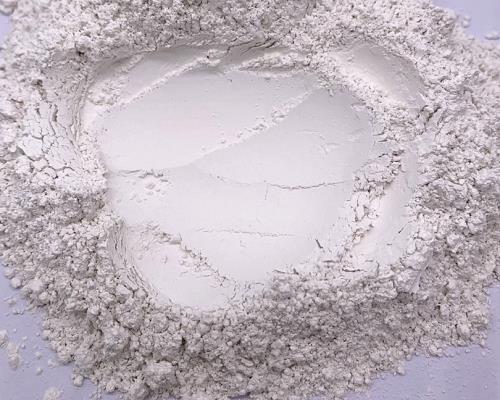Dienogestrel: Endometrial Protection & Safety Profile
Dienogestrel, also known as Dienogestrel, is a synthetic progestogen medication that belongs to the gonane group. It is primarily used in various forms of hormonal birth control and hormone replacement therapy. Dienogestrel works by mimicking the effects of natural progesterone in the body, helping to regulate menstrual cycles and prevent pregnancy. This medication has gained popularity due to its effectiveness and relatively low side effect profile compared to some other hormonal contraceptives. It's pivotal for ladies with endometriosis to work closely with their healthcare suppliers to create a personalized treatment arrangement. This may include combining Dienogestrel with other treatments such as torment administration methodologies, way-of-life adjustments, or surgical intercessions in more serious cases. Whereas this substance has appeared promising comes about in overseeing endometriosis, it's not a remedy for the condition. A few ladies may require extra or elective medicines, and progressing checking is basic to guarantee the best conceivable results. As the investigation in this field proceeds, our understanding of how progestogens like Dienogestrel can be ideally utilized to treat endometriosis is likely to advance, possibly driving to indeed more successful treatment procedures in the future.

The effectiveness of dienogestrel for endometrial protection
Abnormal uterine bleeding (AUB) associated with anovulation without gross uterine abnormality is classified as “abnormal uterine bleeding-ovulatory dysfunction” or AUB-O in the International Federation of Gynecology and Obstetrics (FIGO) classification. AUB-O is a common gynecologic complaint in women during perimenarcheal or perimenopausal periods, and those with polycystic ovary syndrome or obesity. Dienogestrel (DSG), a third-generation progestin, has high progestogenic activity with low androgenic and little to no glucocorticoid and mineralocorticoid effects. DSG may, therefore, be a better choice for perimenopausal or obese women who are at increased risk for abnormal glucose and lipid metabolism. Information specific to Dienogestrel therapy for AUB-O is lacking. The commonly used progestin for AUB-O is medroxyprogesterone acetate (MPA, 5–10 mg/d, 10–14 d/month). Its strong progestogenic effect is preferable for endometrial protection, but its undesirable glucocorticoid, mineralocorticoid, and androgenic effects may negatively affect glucose and lipid metabolism in long-term users. This study aimed to evaluate the effectiveness of cyclic Dienogestrel compared with cyclic MPA on endometrial protection and menstruation normalization in women with AUB-O. We also assessed the safety of these two progestins on metabolic parameters after 6 months of treatment.[1]
Our present study showed that two cyclic-progestin regimens (Dienogestrel 150 µg/d or MPA 10 mg/d, 10 d/month) could transform endometrium to complete pseudodecidualization in > 70% of cases in the treatment cycle-1 and could normalize menstruation in > 90% of all treatment cycles. The authors summarized the daily and total doses of progestins. They considered MPA 5–10 mg/d for a total dose of 80 mg and Dienogestrel 150 µg/d for a total dose of 2 mg to be equivalent. In the present study, a total dose of 100 mg MPA or 1.5 mg DSG was used within 10 days. Although the total dose of 1.5 mg DSG was less than that suggested by Schindler’s review, this dosage was as effective as 100 mg MPA. In conclusion, according to our definition of non-inferiority, the cyclical administration of DSG (150 µg/d, 10 d/month) is not inferior to MPA (10 mg/d, 10 d/month) for pseudodecidualization of endometrium in women with AUB-O. Both DSG and MPA are effective for menstruation normalization in > 90% of cases, but DSG is less effective than MPA. The 6-month metabolic profile changes are comparable between the Dienogestrel and MPA groups, and are not clinically meaningful. Therefore, cyclic DSG can be used as an alternative to MPA for endometrial protection and menstruation normalization in AUB-O.
Drug safety evaluation of dienogestrel
Progestins are a class of drugs that include many steroids with progesterone-like action. One of the main actions of progesterone or progestins is to induce changes in endometrial characteristics, mainly the secretory transformation of an estrogen-primed endometrium. As contraceptive agents, progestins inhibit ovulation. They are usually combined with estrogen in most hormonal contraceptives, but they can also be used as progestin-only contraceptive. The classification of progestins is based on the steroid molecules from which they derive and which determines their structure. Dienogestrel (DSG) is a third-generation progestin (Box 1). It is a 3-deoxy progestin steroid, obtained from 19-nortestosterone. It is commonly used in various formulations for hormonal contraception including combinations with ethinyl estradiol (EE), progestin-only pill and subdermal implants. The material included in the current manuscript was searched and obtained via Medline, PubMed and EMBASE, from inception until January 2013, using the search terms ‘adverse events, side effects, tolerability' in combination with ‘Dienogestrel and progestins'. All pertinent manuscripts were carefully evaluated and their reference lists were examined in order to find other articles that could be included in the present manuscript.[2]
DSG is a prodrug; it is rapidly converted to 3-keto-DSG, which is the active form of drug, in the liver and gut wall. For the biotransformation it requires hydroxylation at C3 that occurs in the intestinal mucosa and during the first-pass metabolism in the liver. DSG is not eliminated by renal excretion, but through the same transformation to the active metabolite in the liver. The Phase I metabolism of Dienogestrel consists in the formation of the 3-keto metabolite, named etonogestrel. The Phase II metabolism is characterized by the formation in the human intestinal mucosa of sulfate and glucuronide conjugates. Most studies examining the pharmacokinetic indexes of DSG were based on the concurrent administration of DSG and EE, which simulated the clinical use of DSG as the progestin component of combined oral contraceptives (OCs). The mean bioavailability of 3-keto-DSG, after administration of an oral preparation of 150 μg Dienogestrel and 30 μg EE, is 81 ± 27%; while it appears to be higher (98 ± 16%) after vaginal administration of the same preparation. This difference can be explained by the potential incomplete absorption of the tablet and/or by the effect of hepatic first-pass that reduces the availability of the drug administered orally. A double-blind, randomized, multicenter study compared the effects of two sequential estradiol-progestin combinations containing either Dienogestrel or norethisterone acetate in climacteric women with estrogen deficiency symptoms.
References
[1]Soontrapa N, Rattanachaiyanont M, Warnnissorn M, Wongwananuruk T, Indhavivadhana S, Tanmahasamut P, Techatraisak K, Angsuwathana S. The effectiveness of desogestrel for endometrial protection in women with abnormal uterine bleeding-ovulatory dysfunction: a non-inferiority randomized controlled trial. Sci Rep. 2022 Jan 31;12(1):1662. doi: 10.1038/s41598-022-05578-0. PMID: 35102226; PMCID: PMC8803876.
[2]Scala, Carolina et al. “Drug safety evaluation of desogestrel.” Expert opinion on drug safety vol. 12,3 (2013): 433-44. doi:10.1517/14740338.2013.788147
You may like
See also
Lastest Price from Dienogestrel manufacturers

US $5.00-0.50/KG2025-05-30
- CAS:
- 65928-58-7
- Min. Order:
- 1KG
- Purity:
- 99% hplc
- Supply Ability:
- 500TONS

US $0.00/g2025-04-21
- CAS:
- 65928-58-7
- Min. Order:
- 10g
- Purity:
- 99%min
- Supply Ability:
- 10kg/month


